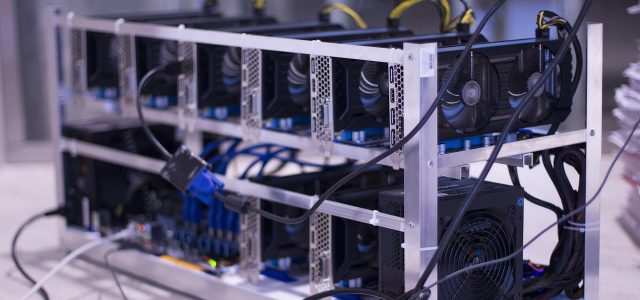When people discuss what it takes to be a successful student in online education, it’s common to focus on curriculum design, faculty contact or time management tools. These are all essential, I would argue that there is something equally vital — although far less sexy: infrastructure. Behind a successful online learning experience is a platform that is fast, secure, and available to students and faculty 24/7. And in this digital-first world, the engine behind that experience is almost always cloud-native.
For the past 25 years I have been employed in various industries leading teams through large scale digital transformation focused on cloud architecture, agile development, and scalable platforms. Whether that’s building retail commerce systems or backends for the enterprise, it’s still the same requirement: something that’s resilient, flexible, and, um, student- or user-focused. So when I see applications like the WGU Student Portal, it’s not just an interface I see – it’s a reflection of the systems driving student success.
So, in this post, I thought I’d discuss why cloud strategy isn’t simply a technical decision but one that has strategic implications for institutions like Western Governors University (WGU), and how it affects student experience.
The Particularity of WGU’s Model
WGU is known for its competency-based, self-paced learning method. Many of its students are working professionals, parents or career changers who attend during unusual hours — often well into the night or first thing in the morning. That also means there’s no way the portal can tolerate downtime or latency during business hours. It should be “always on” and always listening.
Traditional on-premise systems, however, are ill suited to this need for 24/7 availability, high concurrency, and flexibility. A static infrastructure with a fixed size can’t handle peak loads or dynamic needs for new features. This is where a properly designed cloud-native strategy is key.
What Cloud-Native Is, and How to Get There
“Cloud-native” is about more than moving servers to AWS or Azure. It’s about creating platforms that leverage every capability of the cloud — scalability, elasticity, automation, and resilience.
For the WGU Student Portal:
Auto-scaling compute power on-peak (eg around assignment deadlines or start of semester)
Learning Systems: 100% up-time all the time High Availability with multi-region deployment, so if you’re a student in Waikiki or West Bengal your internet connection is the only thing slowing you down.
“rolling updates” for new features (ie no more long maintenance windows or service disruption)
Strong data control and protection with cloud-native encryption, identity, and compliance tools
These are not purely IT implications; they directly determine how students experience learning.
Picture a student logging in after finally tucking their kids into bed, prepared to finish an important assignment — and the portal is down. Or to wait 20 seconds for each click to load in the middle of an exam. These small sabotages can cause friction, add stress and even affect retention.
Constructing with Agility and Feedback in Sight
One of the things I’ve discovered running large digital commerce platforms is the power of iterative development and feedback loops. With cloud-native platforms, development teams can deploy faster, debug fast and release changes in days rather than quarters.
By applying agile mindsets to its student portal infrastructure, WGU can:
- Be responsive to student feedback in real time
- Try out new capabilities (such as custom dashboards and AI tutors) without putting system stability at risk
- Constantly monitor and strive to improve your app performance yourself
- This is especially important in academia, where student requirements change rapidly – even in middle of a term.
- Integration and Modularity Are Game-Changers
It is also possible to integrate modular systems thanks to the cloud. Instead of a monolithic application, the WGU Student Portal can be an aggregate of individual services — LMS, assessments, advising, financial aid, support systems — all stitched together through APIs and microservices.
Not only does this result in more agile development, it also lowers risk. The whole system shouldn’t collapse because of one hole in the financial aid module. Most important of all though, modularity allows WGU to add the best of breed tools as and when it chooses without a full rip and replace.
Tightly integrated and independently optimized service is good for students. Their experience is elegant, notwithstanding the potential for dozens of microservices, SaaS platforms, and internal tools on the backend.
Cloud Infrastructure and Data Responsibility
A strong cloud strategy is not just about performance — it’s about responsible data stewardship. Education platforms gather profoundly personal data, from demographics to grades. The infrastructure should have support for data privacy, access control, encryption and audit.
Advanced platforms for cloud native development have tools for:
- Encryption of data while stationary and in transit
- granular IAM policy using roles
- Elastic search alerting for anomaly detection
- Compliance with regulatory structures such as FERPA or GDPR
Trust is foundational in education. Students need to be assured that their information is secure, and the institutions need tools to demonstrate that. That is possible because of a robust cloud base.
Getting Ready for What’s Next: AI, Personalization, and More
Personalized learning, chatbots, predictive analytics, and real-time support are probably the future of platforms such as the WGU Student Portal. All these changes need a flexible, new infrastructure.
And trying to retrofit these into an old, monolithic system is like trying to install solar panels onto a rotten roof — it’s not going to hold. But a cloud-native platform with clean data pipelines and APIs can easily plug into new services as they come out.
WGU has already demonstrated that it can disrupt higher education with its academic model. The next challenge is to pair that with technology infrastructure that is just as forward looking.
Final Thoughts
As is often the case, all this came at a cost: By engineering on top of an in-house stack, we were essentially locked into a tech path we weren’t particularly excited about; in retrospect, we decorated a jail cell to create a nice, cozy space, but we were still locked in. For WGU, the student is the ultimate consumer — and the stakes are high. Students use the portal not just for the content, but for communication, connection, progress tracking and motivation.
Cloud-native architecture is more than a buzzword — it is a reliable, fast, flexible, and trustworthy blueprint. Do it right and it disappears into the background, enabling students to concentrate on what really counts — learning, growing and reaching their goals.
Infrastructure investment is investment in student success. And it’s a tactic every institution should consider very seriously.
Article by channel:
Everything you need to know about Digital Transformation
The best articles, news and events direct to your inbox
Read more articles tagged:






